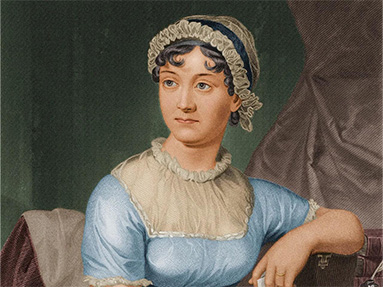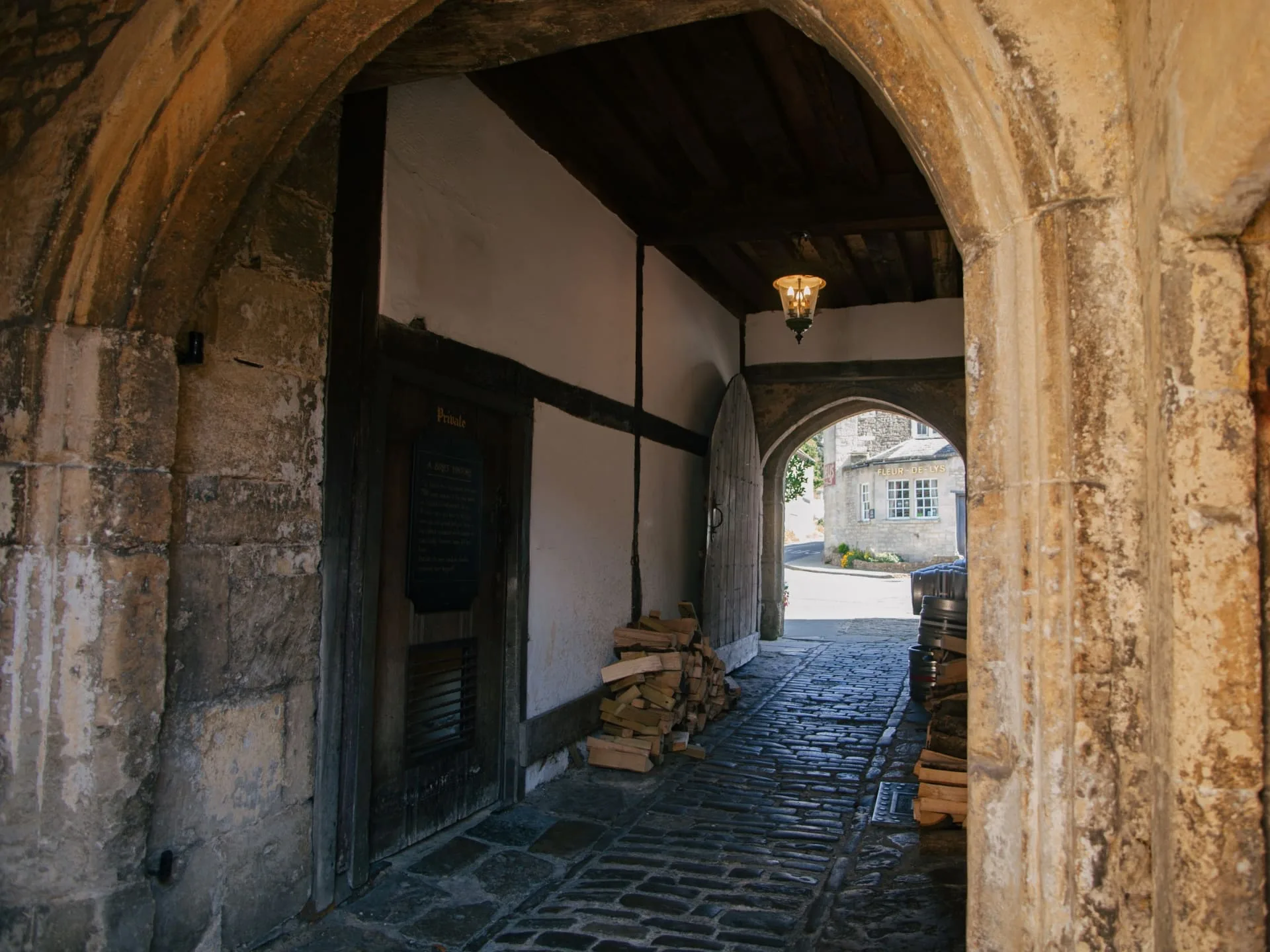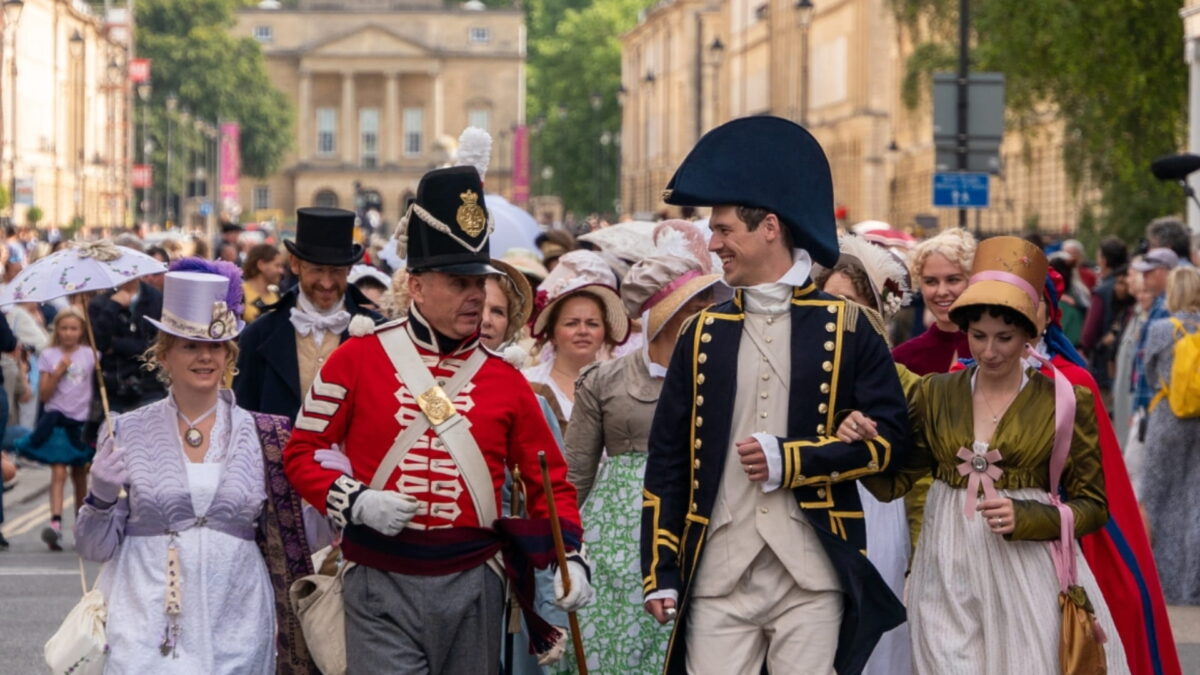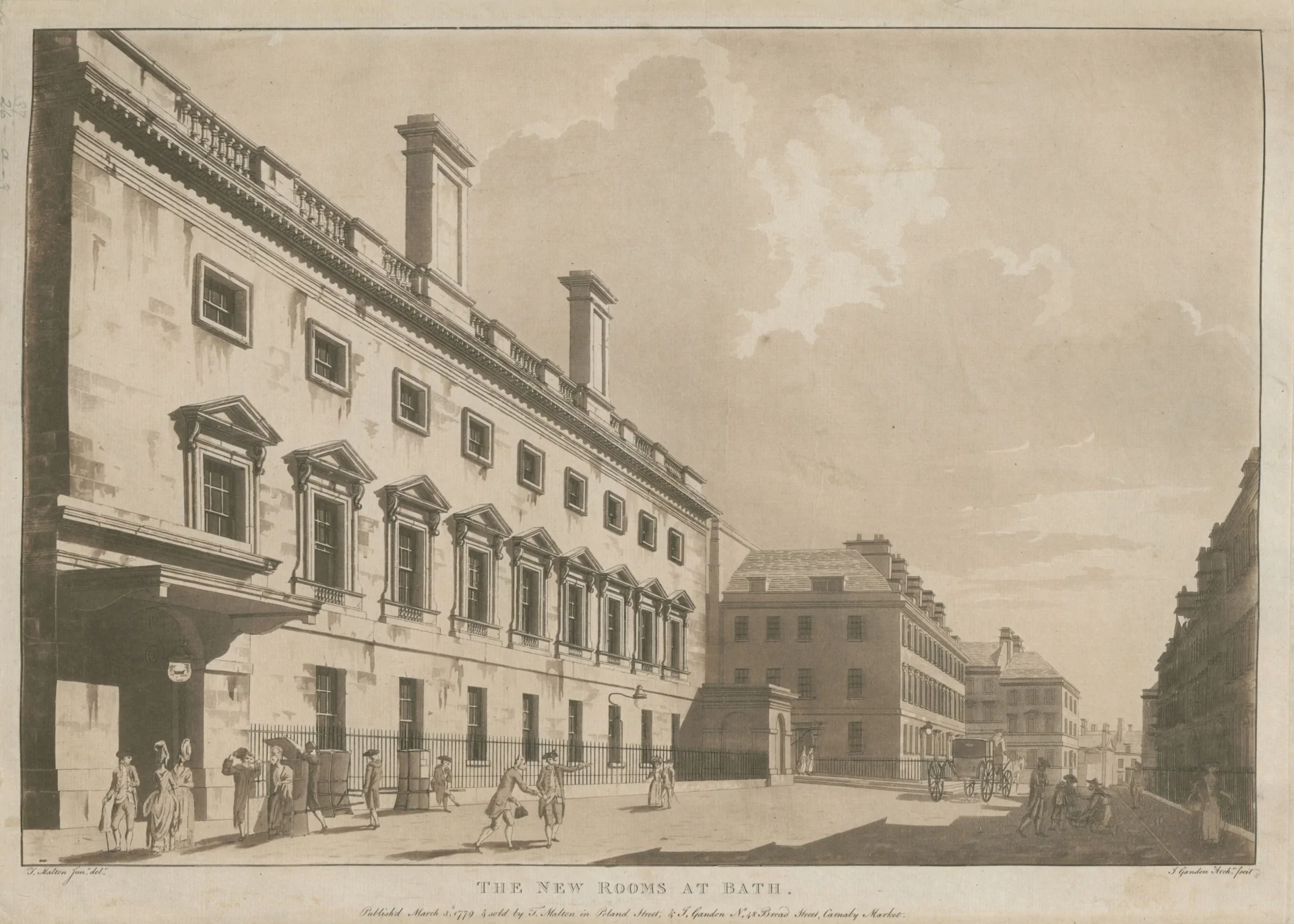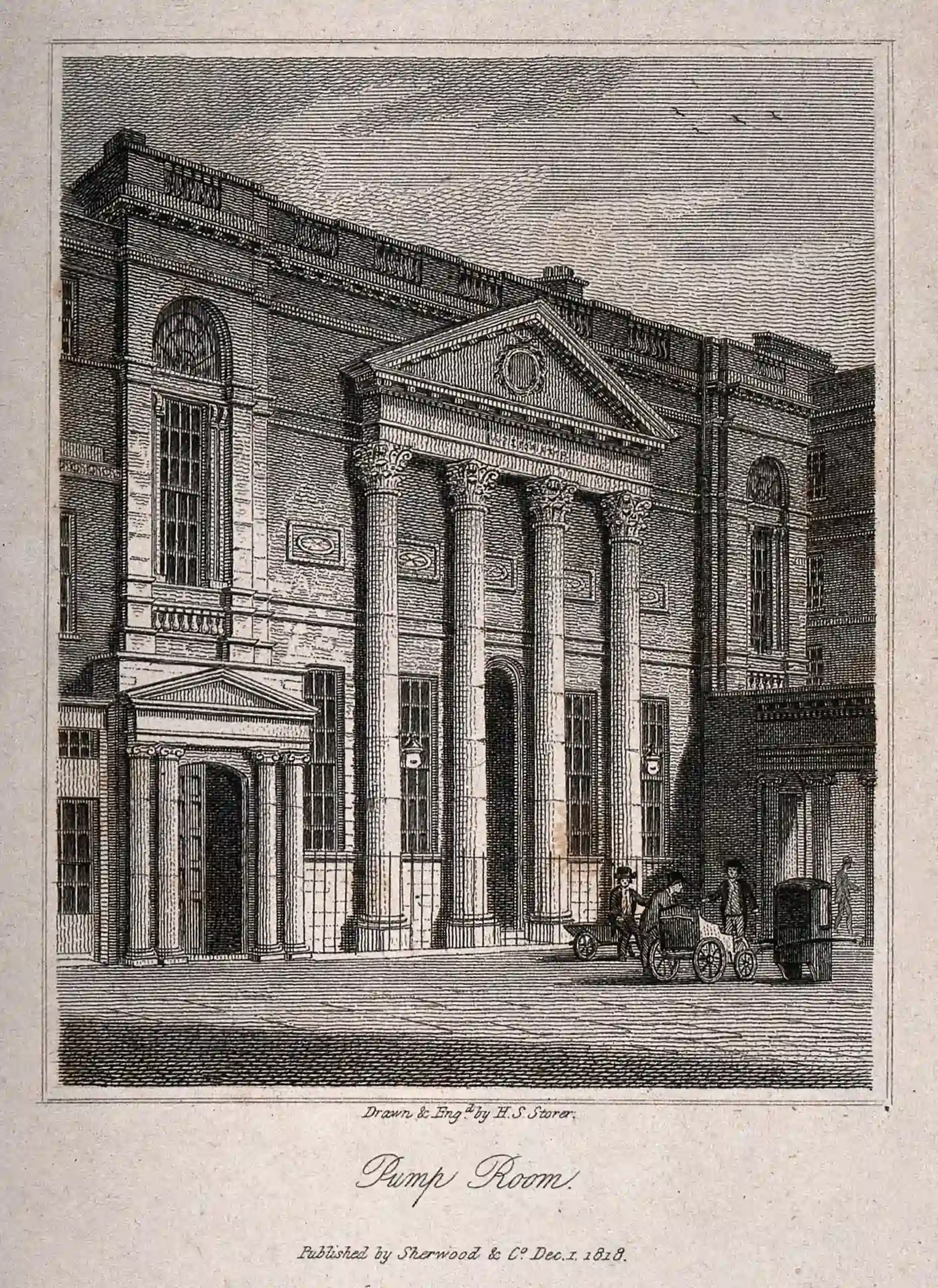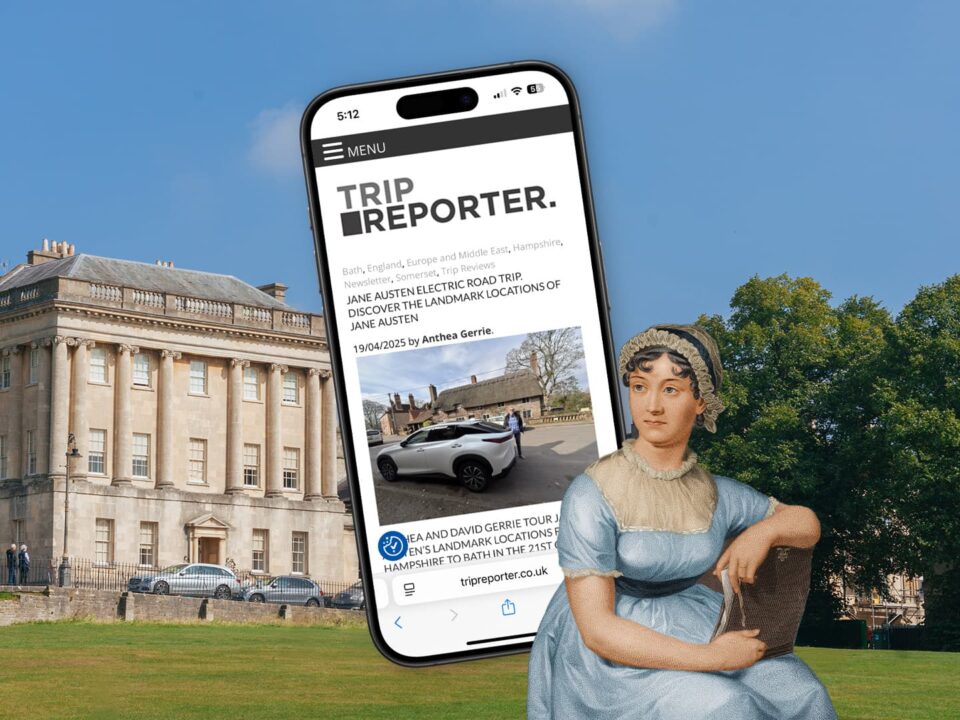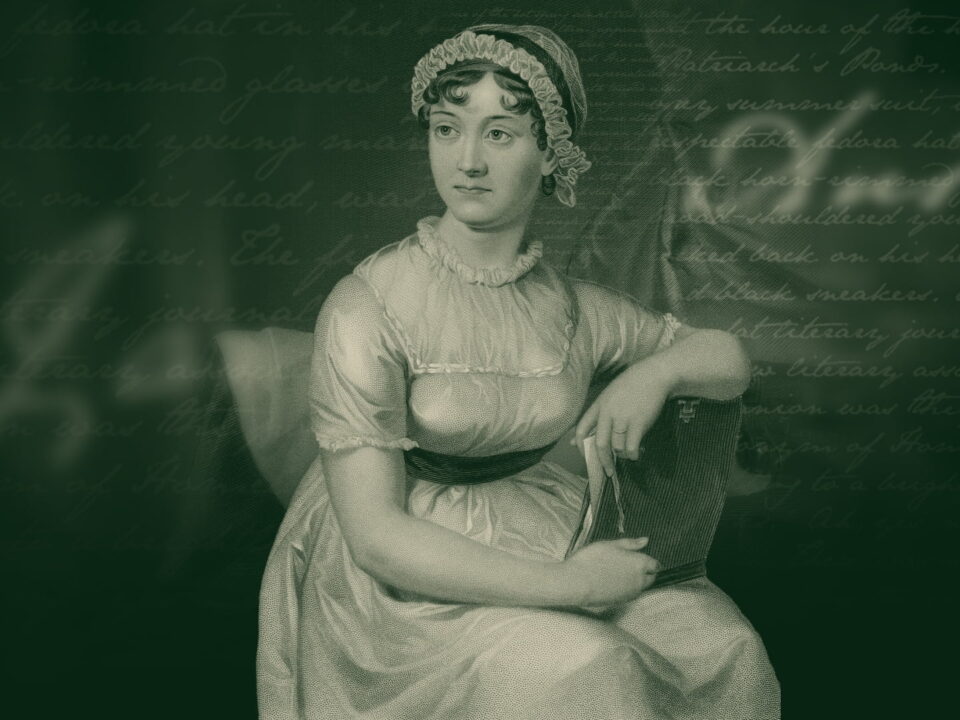
Bath Newseum Feature: Our Founder on #Austen250
April 4, 2025
Your Complete Guide to Jane Austen’s 250th Anniversary in Bath (2025)
April 16, 2025Jane Austen in Bath: The City That Inspired a Literary Icon
Bath stands as one of England's most significant literary destinations, especially for admirers of Jane Austen. As we celebrate the 250th anniversary of her life and works, there's never been a better time to walk in the footsteps of one of Britain's most beloved authors.
Updated on: 10/04/2025
Written by Jules Mittra
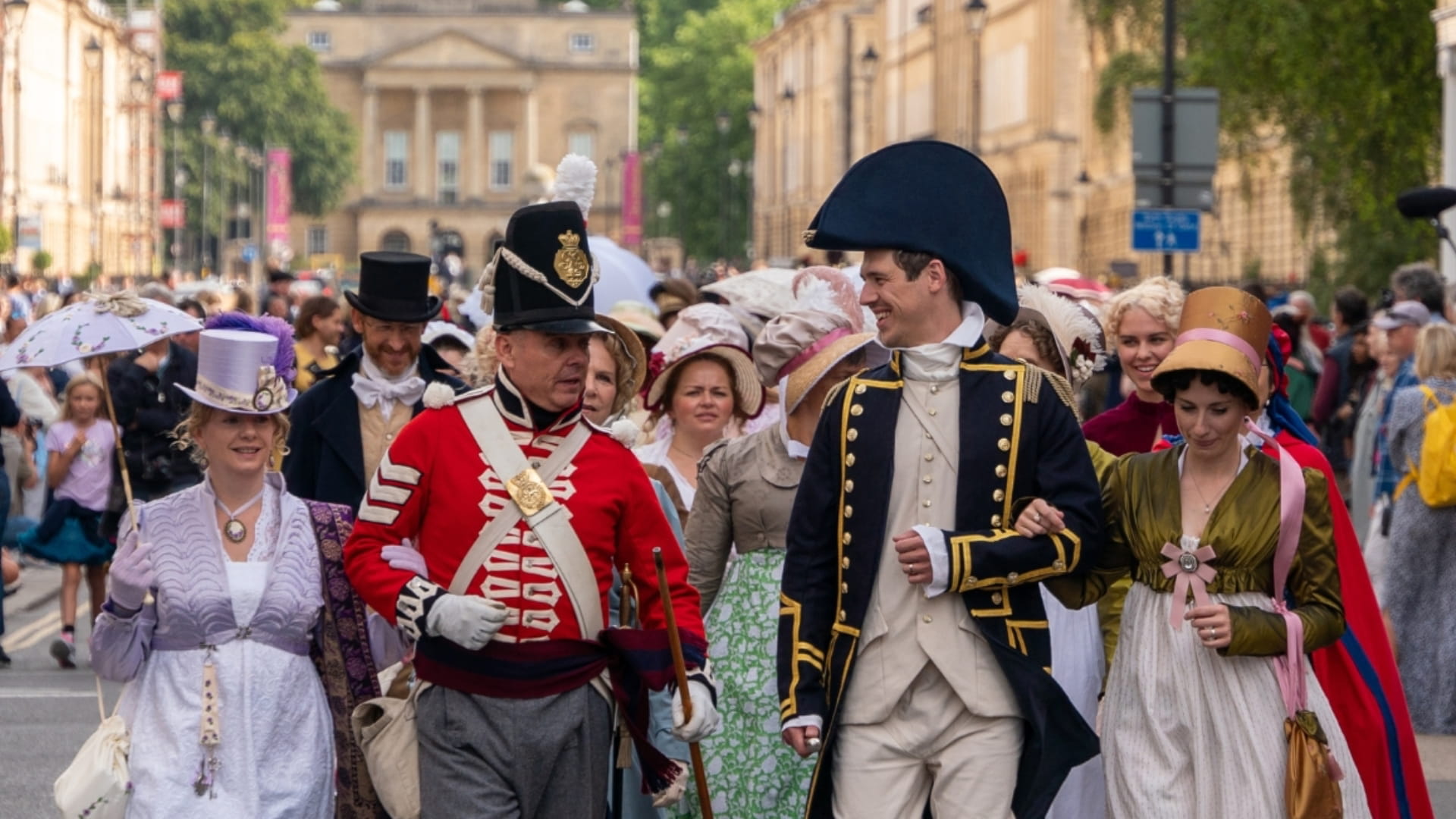
In short...
- Bath’s Georgian streets and social scene deeply shaped Northanger Abbey and Persuasion, making the city a living museum of Austen’s world
- Top sites like the Jane Austen Centre, Pump Rooms, and Great Pulteney Street immerse visitors in Austen’s life, literature, and iconic filming locations
- Go beyond the city with tours to Lacock, Luckington, and Stourhead, connecting Austen fans to real-life and on-screen love stories
Bath, a UNESCO World Heritage city, is not merely a backdrop to Austen's life—it was an essential character in her literary world. The city's stunning Georgian architecture provides the perfect setting for visitors seeking to immerse themselves in Austen's England. Her five-year residence here (1801-1806) profoundly influenced her writing, particularly her novel Northanger Abbey, published posthumously.
The connection between Austen and Bath runs so deep that modern adaptations of her work, including the recent phenomenon Bridgerton, chose the city as their primary filming location—a testament to Bath's enduring Regency charm and authenticity.
"Bath is a world of stone, a city of creamy golden buildings that glow with the mellowness of age and use." — Jane Austen, Northanger Abbey
Why Jane Austen and Bath Are Inextricably Linked
Jane Austen's relationship with Bath was complex and profound. Though her personal feelings about the city were mixed, her intimate knowledge of Bath's society and customs enriched her novels with authentic detail and social commentary that continues to resonate with readers today.
Bath during the Regency period was a social hub where people of means gathered to see and be seen. This vibrant social scene provided Austen with rich material for her keen observations on human nature, class dynamics, and the marriage market—themes that define her literary legacy.
The city is brimming with Austen connections—from streets she walked to buildings she frequented. These locations appear both in her personal letters and her fiction, making Bath a living museum of Austen's world.
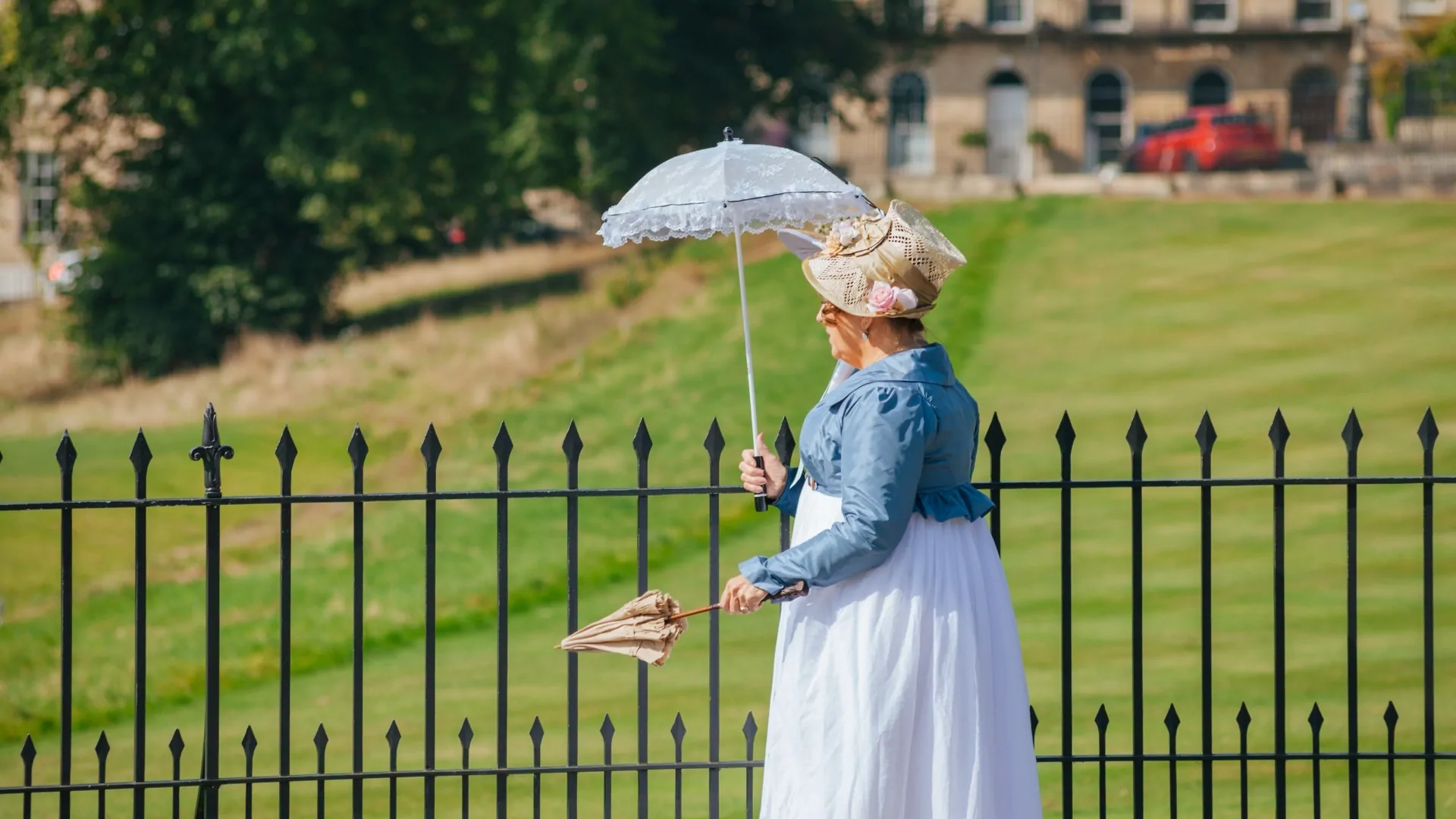
Festival participants in period costume at Bath's iconic Royal Crescent
Did you know? Bath features prominently in two of Austen's six completed novels: Northanger Abbey and Persuasion.
Visiting Jane Austen Locations in Bath
Ready to step into the pages of Austen's novels? Join our Jane Austen's Walking Tour of Bath to experience these locations with expert guidance. Our walking tours blend historical context with literary insight for a truly immersive experience.
The Jane Austen Centre
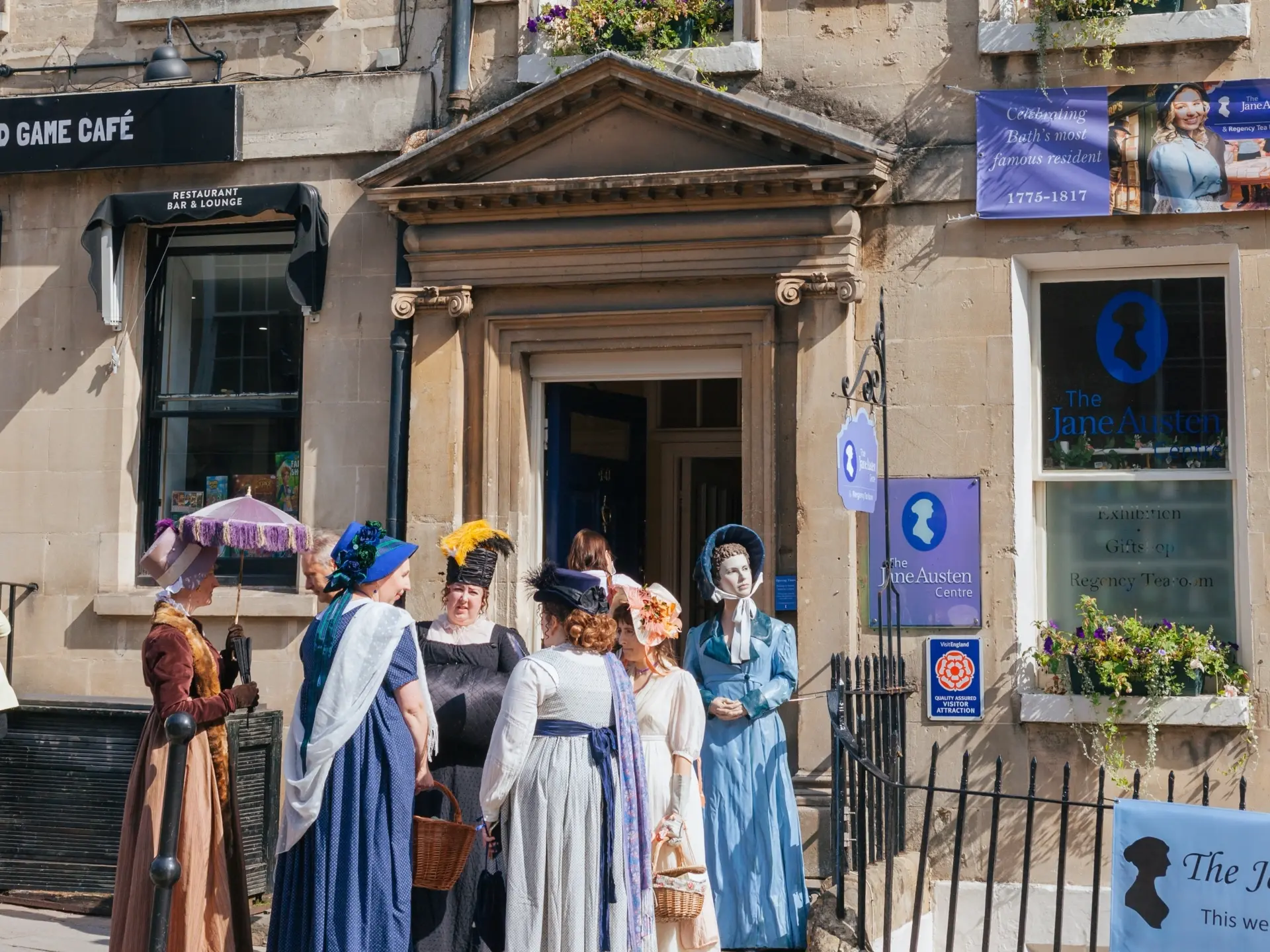
The Jane Austen Centre on Gay Street
This dedicated museum celebrates Austen's life and literary achievements. What makes this attraction unique is the immersive historical experience created by costumed actors who embody the manners and speech of Austen's era.
The Centre is strategically located on Gay Street, just steps away from one of Austen's former residences. Inside, you'll discover:
- Detailed exhibits on Austen's time in Bath
- Period costumes and artifacts
- Interactive displays highlighting her novels
- A tearoom offering traditional Regency refreshments
The Centre serves as an excellent starting point for any Austen enthusiast's journey through Bath, providing essential context for the city's significance in her life and works.
The Upper Assembly Rooms
The Assembly Rooms represented the heart of Bathonian high society during the late 18th and early 19th centuries. This grand building hosted the balls, concerts, and social gatherings that feature prominently in Austen's novels.
When the Austen family arrived in Bath, Jane—at 26 years old, without fortune, and considered past the prime marriage age—experienced the social pressures that she later immortalised in her heroines' stories.
The Assembly Rooms were specifically designed to facilitate social interaction with:
- An impressive ballroom for dancing and making connections
- A tea room for refreshments and conversation
- A card room where fortunes could be won or lost
- Multiple spaces for the gossip and social manoeuvring that Austen so brilliantly captured
Although currently closed for renovation by the National Trust, the Assembly Rooms will soon reopen as a world-class attraction showcasing Bath during Austen's time. When visiting Bath, check current opening information to see if this important historical site is accessible during your stay.
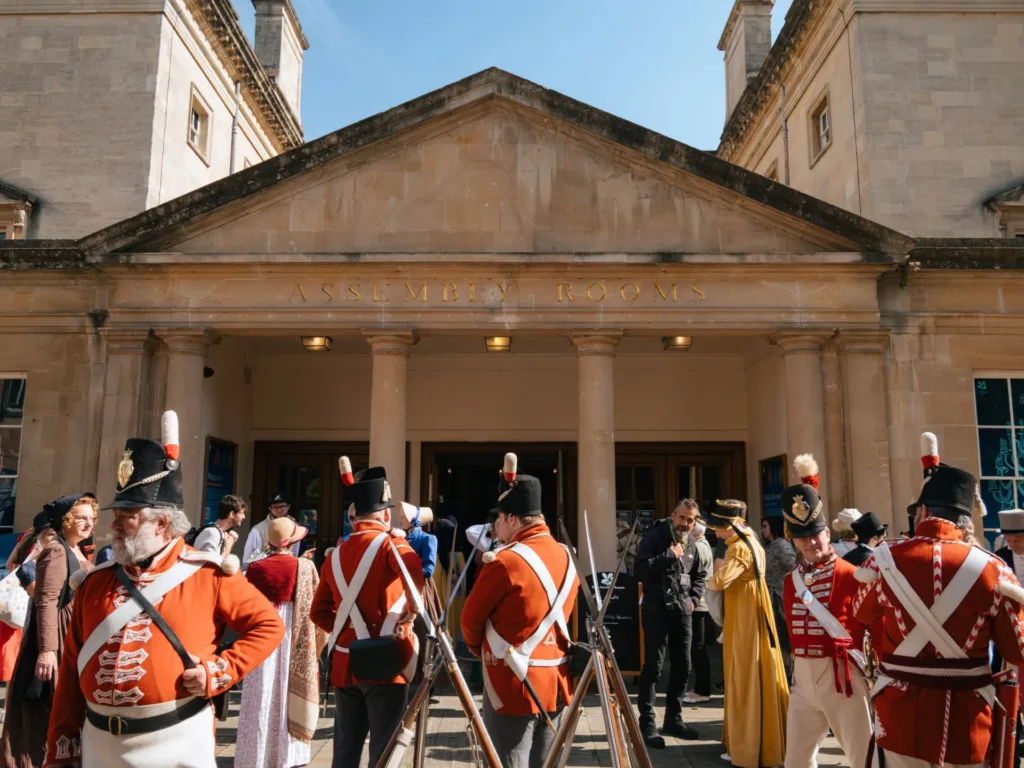
The Assembly Rooms during the Jane Austen Festival, alive with Regency characters and costumes.
The Pump Rooms

The Pump Room, once the heart of Georgian society, is now a timeless Bath landmark.
Adjacent to the historic Roman Baths, the Pump Rooms served as another crucial social hub for Bath's elite during Austen's era. Named for the pumps that brought mineral water from the hot springs below, this elegant establishment offered a gathering place for the wealthy to socialise while ostensibly "taking the waters" for their health.
In Austen's novels, particularly Northanger Abbey and Persuasion, the Pump Rooms serve as key settings for encounters between characters. Today, the venue maintains its Georgian elegance and atmosphere, offering visitors:
- Traditional afternoon tea in historic surroundings
- The opportunity to taste the famous (if not particularly delicious) spa water
- Live music, though now typically performed by a pianist rather than a full orchestra
- A tangible connection to the social rituals of Austen's time
Experiencing afternoon tea at the Pump Rooms allows modern visitors to participate in the same social custom that Austen and her characters would have enjoyed, creating a direct link to the past.
Great Pulteney Street
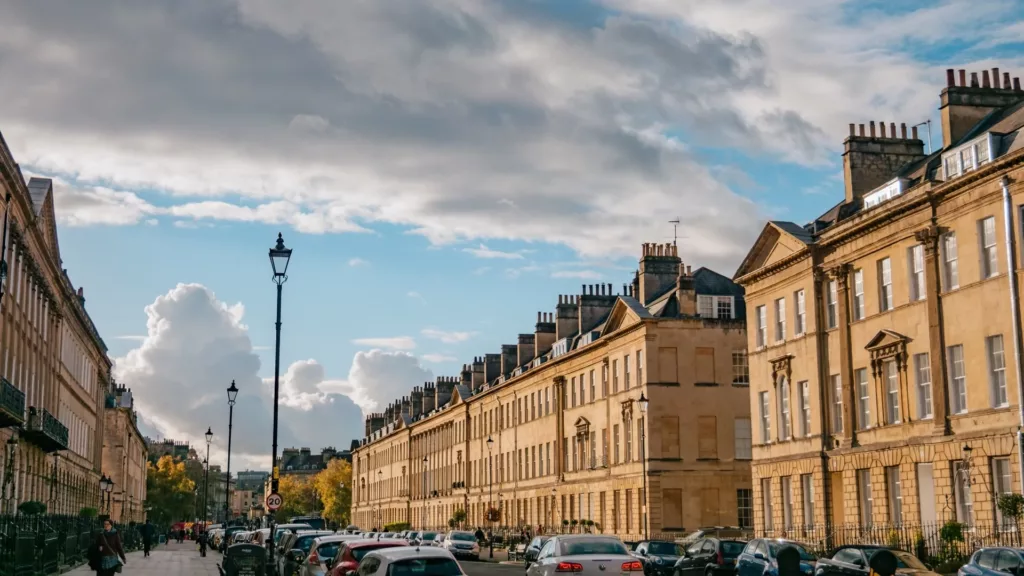
Bath’s iconic Great Pulteney Street. Elegant, historic, and often seen on screen.
This magnificent boulevard represents one of Bath's most iconic Georgian developments. Commissioned by Sir William Pulteney in the late 18th century, this wide, impressive street was designed to extend Bath's fashionable districts south of the River Avon.
Great Pulteney Street showcases the architectural elegance that defined Austen's era. Its significance for Austen enthusiasts includes:
- Direct references in Persuasion, where Lady Dalrymple resided at Laura Place (the small square at the street's northern end)
- Appearances in numerous Austen adaptations, including the BBC's Persuasion
- Preservation of the exact streetscape that Austen would have known
This street's exceptional preservation has made it a favourite filming location for period dramas, including Vanity Fair, The Duchess, and Bridgerton. Walking along Great Pulteney Street offers visitors an authentic glimpse into the world Austen inhabited and wrote about.
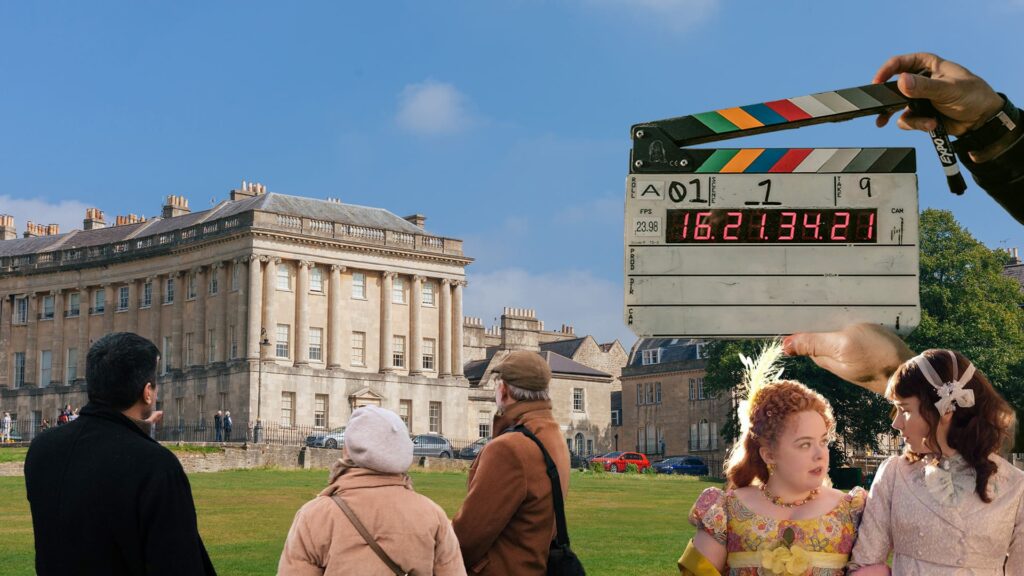
Walk Where the Cameras Rolled
Bath’s real-life locations behind your favourite scenes.
Join our Filming Locations Walking Tour and uncover Bath’s cinematic side—perfect for film fans and curious wanderers alike. Discover behind-the-scenes stories and spot the hidden stars of the city streets.
Going Beyond Bath: More Jane Austen Connections
For the complete Austen experience, consider our Jane Austen's Bath & Beyond full-day tour, which combines our morning walking tour with an afternoon adventure to iconic locations outside the city.
Lacock & Lacock Abbey
This stunning small, beautifully preserved medieval village and grand house just 10 miles or so east of Bath has become, like Bath, a popular filming location for period dramas and films. Both the house and adjacent village were handed to the National Trust by the last owner of the estate, Matilda Talbot, in the 1950s on her death.
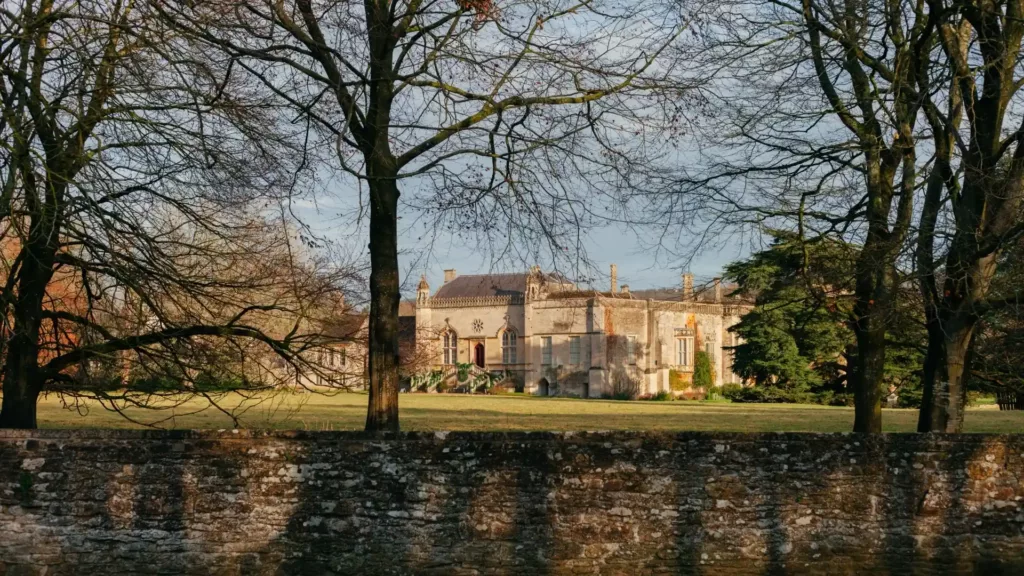
Lacock House & Abbey grounds
Just 10 miles east of Bath lies this remarkably preserved medieval village and grand house. Remarkably, both the village and abbey have remained virtually unchanged since Austen's time, having been donated to the National Trust by the last private owner, Matilda Talbot, in the 1950s.
Lacock's appeal to Austen enthusiasts stems from its prominence in screen adaptations:
- The village served as Meryton in the landmark 1995 BBC adaptation of Pride and Prejudice
- The Red Lion Pub, still displaying its era-appropriate signage from filming, featured prominently in the series
- Lacock Abbey appeared as Darcy's Oxford University halls
- The Abbey also hosted scenes depicting Lydia and Wickham's elopement
Did you know? Lacock Abbey features in Harry Potter as the halls and Snape's classroom to Hogwarts in the first two films?

The Red Lion Pub maintains its Pride and Prejudice-era sign
What makes Lacock particularly special is its authentic time-capsule quality. With houses dating from the 1500s to early 1800s and a complete absence of modern intrusions like traffic signs and telephone wires, visiting Lacock truly feels like stepping into Austen's England.
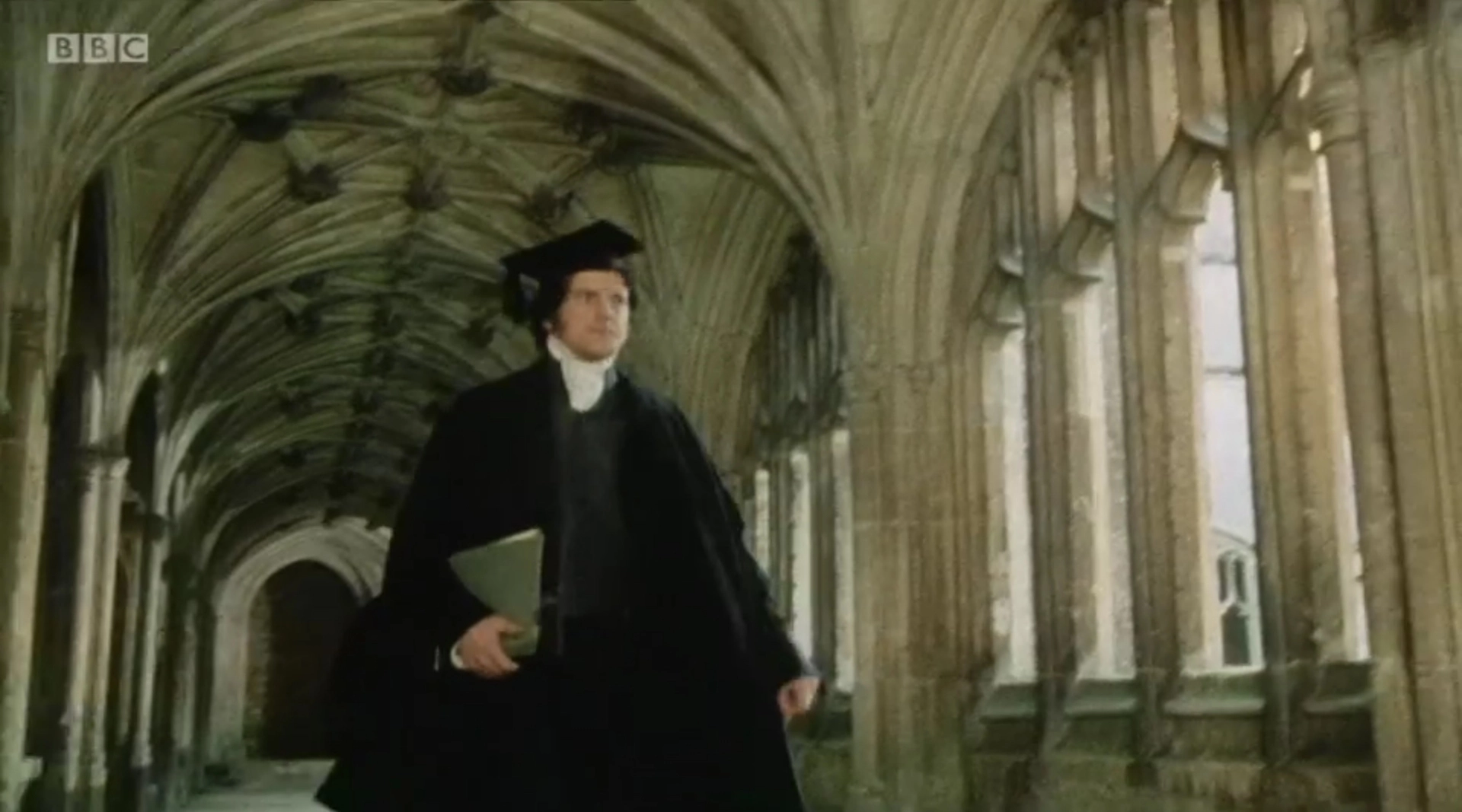
Lacock Abbey in the 1995 BBC adaptation of Pride and Prejudice
Interestingly, Lacock has found renewed fame through its association with another British literary phenomenon—the Harry Potter films—making it a destination for fans of multiple literary worlds.
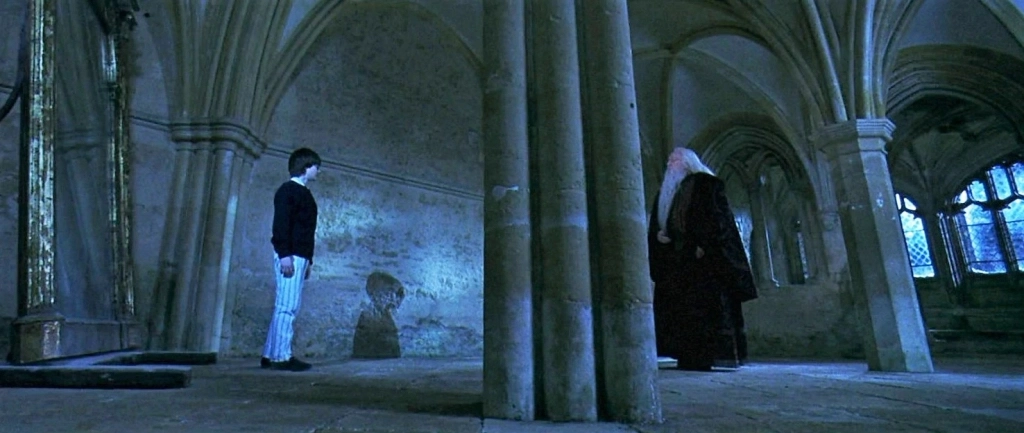
Lacock Abbey in Harry Potter and the Philosopher's Stone
Avebury, Lacock & Ancient England
Venture along the Great West Way to explore Lacock, one of England’s most filmed villages and a favourite for period dramas and blockbuster productions. Alongside this cinematic gem, uncover the ancient mystery of Avebury—Europe’s largest stone circle—plus charming surprises off the beaten track.
Luckington Church
Located approximately 30 minutes northeast of Bath in the southern Cotswolds, the village of Luckington holds special significance for fans of the 1995 Pride and Prejudice adaptation.
The Church of St Mary with St Ethelbert was the filming location for one of the most beloved scenes in Austen adaptation history—the double wedding finale where Elizabeth Bennet, Mr. Darcy, Jane Bennet, and Mr. Bingley exchange vows.
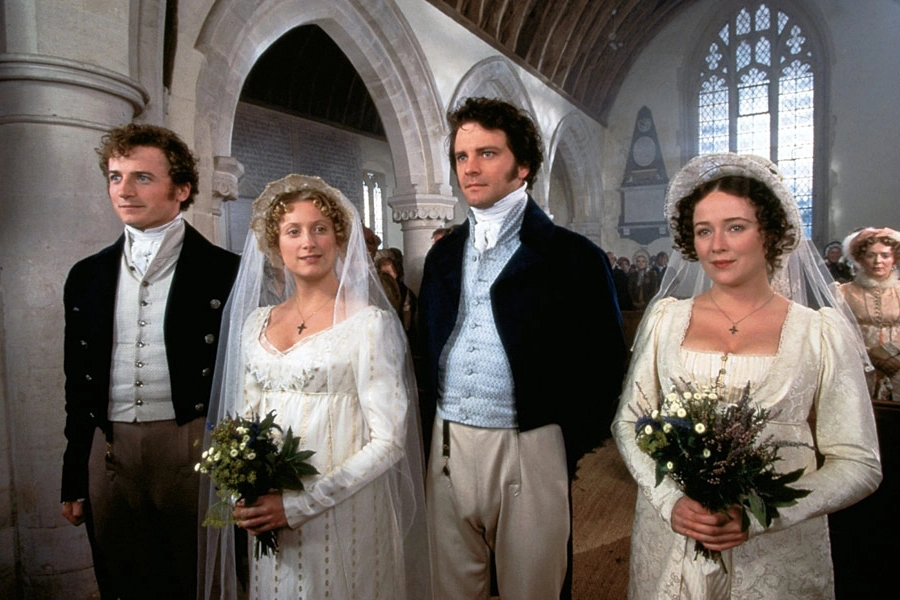
BBC 1995 Pride & Prejudice wedding scene at Luckington Church
While nearby Luckington Court, which served as the Bennet family home of Longbourne, remains in private hands, the church welcomes visitors. Standing in the exact spot where these fictional marriages took place offers fans a powerful connection to these beloved characters and their happy endings.
The Stourhead Estate
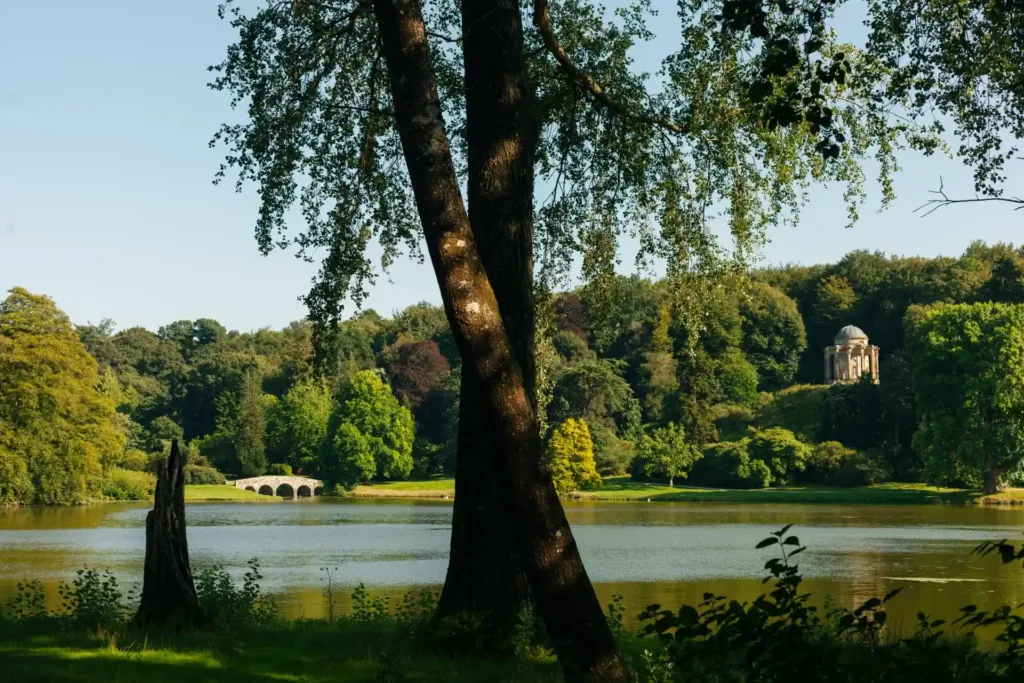
The breathtaking landscape gardens at Stourhead
The Stourhead Estate, managed by the National Trust, features prominently in the 2005 film adaptation of Pride and Prejudice starring Keira Knightley. Located approximately 45 minutes south of Bath, this stunning property offers:
- One of the world's most magnificent landscape gardens
- An 18th-century Palladian mansion
- The iconic setting for Darcy's rain-soaked proposal to Elizabeth
The estate was created by the Hoare banking family in the early 1700s, with the gardens designed to evoke the landscape paintings popular during that period. Henry Hoare II meticulously arranged the grounds to create breathtaking vistas around an artificial lake, complemented by classical temples, grottoes, and rare plant specimens.
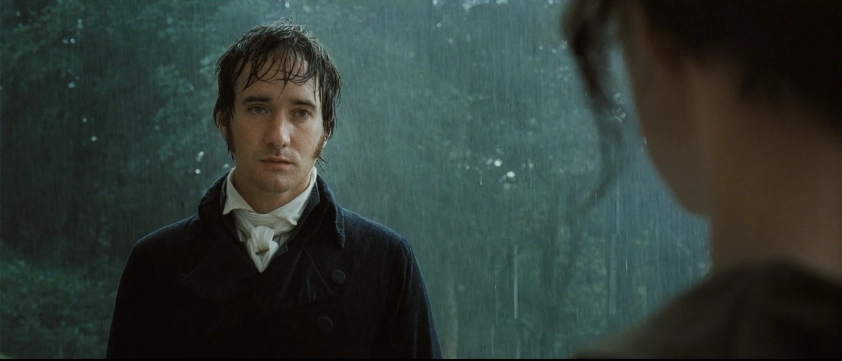
The iconic rain proposal scene filmed at Stourhead
Why Visit During the Jane Austen Festival?

Festival-goers in costume outside the Pump Room at the Jane Austen Festival.
Every September, Bath transforms into a celebration of all things Austen during the ten-day Jane Austen Festival. This annual event has become a pilgrimage for Austen devotees from around the world.
During the festival, participants in Regency attire promenade through Bath's historic streets, creating a living tableau of Austen's era. The festival offers:
- Guided walks following in Austen's footsteps
- Costumed balls in historic venues
- Theatrical performances of Austen's works
- Workshops on Regency crafts, dancing, and etiquette
- Talks by leading Austen scholars and authors
The festival creates a unique opportunity to experience Bath as it might have appeared during Austen's lifetime, with hundreds of costumed participants bringing the Regency period vividly to life.
For festival dates and event details, visit the Jane Austen Centre's official festival page.
Plan Your Own Jane Austen Adventure with Our Tours
At In & Beyond Bath, we specialise in bringing literary history to life through our expertly guided experiences:
- Jane Austen's Walking Tour of Bath: A 2-hour guided exploration of Austen's Bath, visiting key locations while discovering how they influenced her writing and life. Perfect for visitors with limited time or as an introduction to Austen's Bath.
- Jane Austen's Bath & Beyond: Our comprehensive full-day experience combines the morning walking tour with an afternoon journey to filming locations and Austen-related sites outside the city. This tour offers the most complete immersion into Austen's world, both historical and cinematic.
Both tours are led by knowledgeable guides who combine historical expertise with a passion for Austen's literature, ensuring an informative and engaging experience.
Conclusion: Immerse Yourself in Austen's World
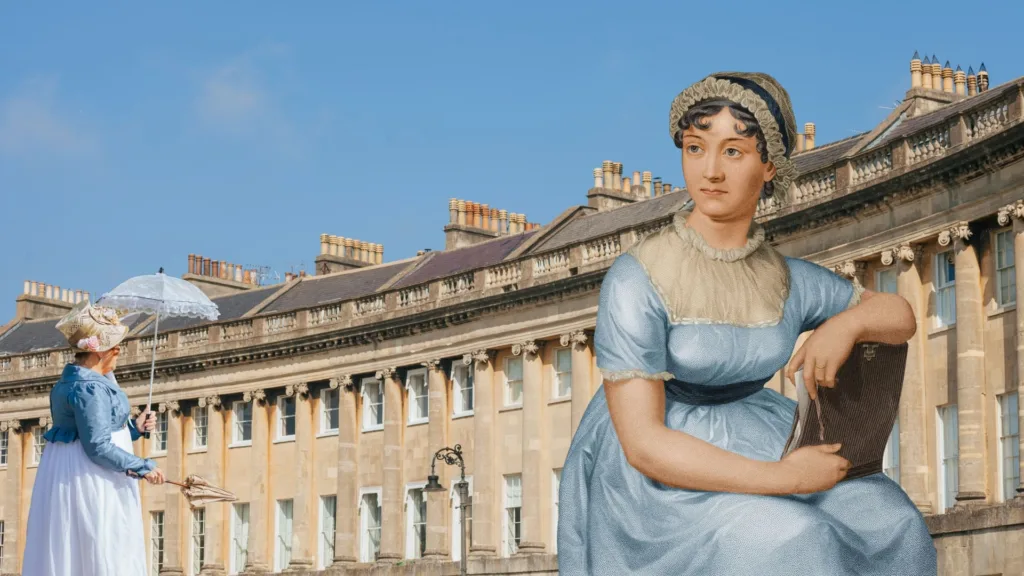
Jane Austen’s legacy lives on in Bath.
Bath and the surrounding Cotswolds offer an unparalleled opportunity to connect with the England that inspired Jane Austen's beloved novels. The region's remarkably preserved Georgian architecture, combined with its direct connections to Austen's life and work, creates a uniquely immersive literary experience.
Whether you're a dedicated Janeite or simply curious about the world behind the novels, visiting these locations provides context and depth to Austen's writing. The physical settings she knew—from Bath's elegant streets to the countryside that inspired her fictional landscapes—continue to evoke the atmosphere of her stories.
As you walk where Jane walked, you'll gain new appreciation for how thoroughly her novels captured the essence of her time and place—and why her insights into human nature continue to resonate more than two centuries later.
Written by Jules Mittra, Founder of In & Beyond Bath and Austen enthusiast

ABOUT THE AUTHOR
Jules Mittra
Ex-history teacher & tour guide, he has both academic insight as well as on-ground expertise.

